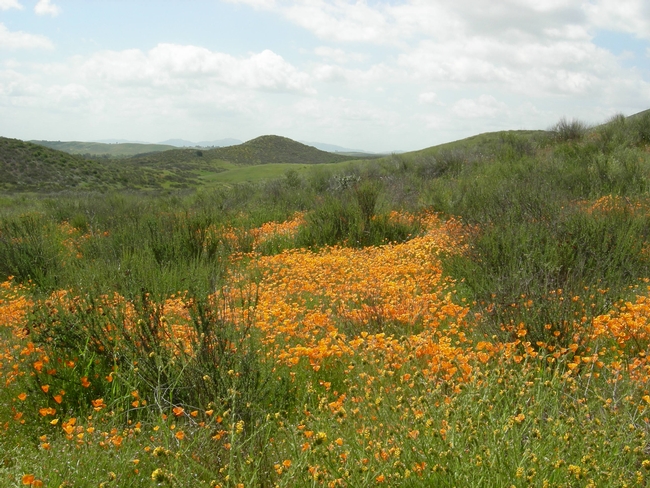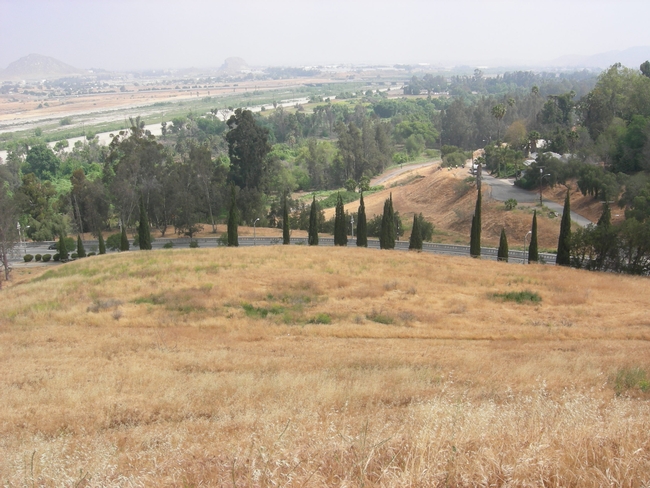Posts Tagged: sage
This Bully Bee Goes for the Blue Plate Special
It's a bully. But what a bully! Ever seen the male European wool carder bee (Anthidium manicatum) protecting its turf? It's "no-holds barred" on...
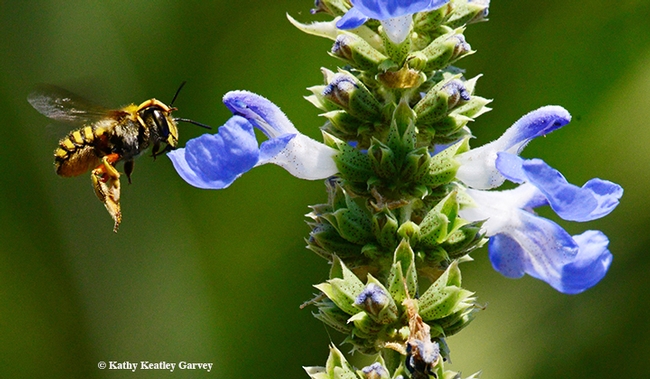
European wool carder bee, Anthidium manicatum, heads toward a blue spike sage, Salvia uliginosa. (Photo by Kathy Keatley Garvey)
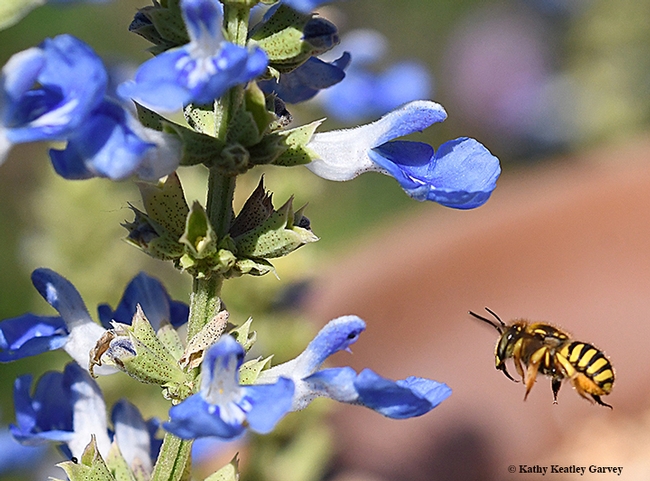
The European wool carder bee, an Old World bee, seems to prefer blue flowers with a long throat. This is blue spike sage, Salvia uliginosa, a native of Brazil. (Photo by Kathy Keatley Garvey)
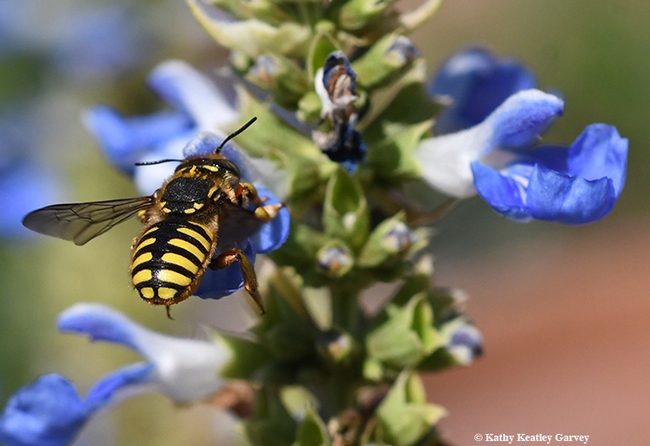
Two European wool carder bees in the process of giving the world more wool carder bees. (Photo by Kathy Keatley Garvey)
They Hop and They Suck!
You've seen them. You've seen them hop. They're aptly named. Leafhoppers are tiny insects (family Cicadellidae) that suck nutrients from...
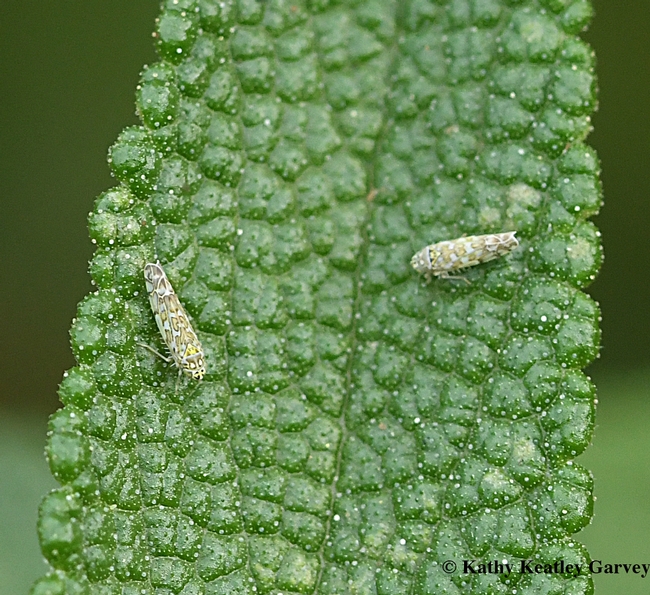
Two leafhoppers sharing a black sage leaf in Vacaville, Calif. They are Typhlocybinae leafhoppers, Eupteryx decemnotata, according to Robert Lord Zimlich of BugGuide.Net. (Photo by Kathy Keatley Garvey)
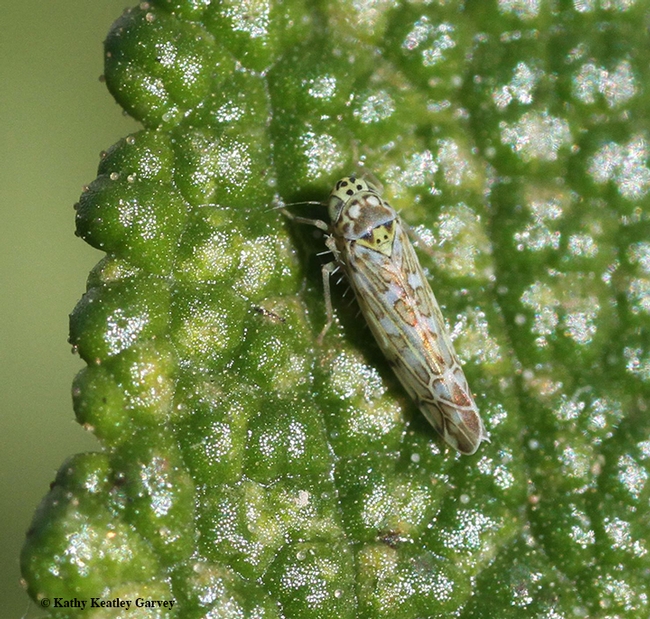
"Leafhoppers generally are varying shades of green, yellow, or brown, and often mottled," according to the UC Statewide Integrated Pest Management Program. This one is a Eupteryx decemnotata on black sage (Salvia mellifera) in Vacaville, Calif. (Photo by Kathy Keatley Garvey)
UC Davis Arboretum Plant Sale: Think Pollinators!
Think bees. Think butterflies. Think plants that will attract them. The UC Davis Arboretum and Public Garden is hosting its first in a series of...
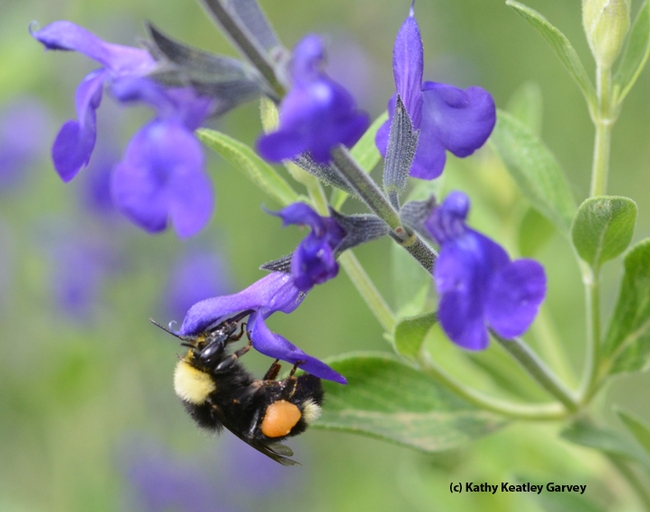
A black-faced bumble bee, Bombus californicus, forages on Purple Ginny salvia (sage). Sages are popular at the UC Davis Arboretum Plant Sales.(Photo by Kathy Keatley Garvey)
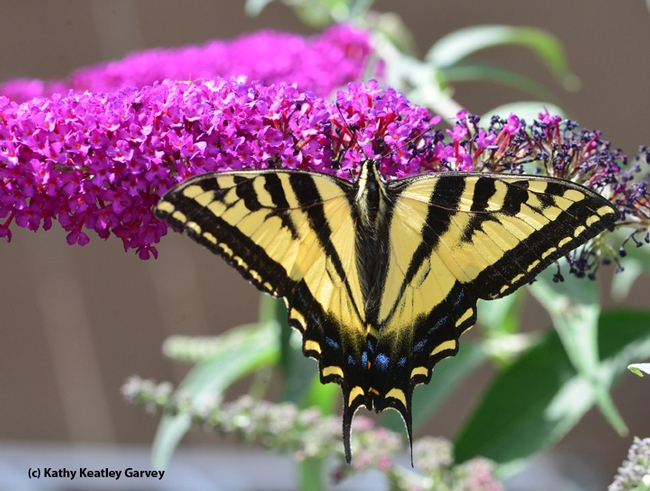
A Western tiger swallowtail, Papilio rutulus, sips nectars from a butterfly bush, Buddleia davidii. (Photo by Kathy Keatley Garvey)
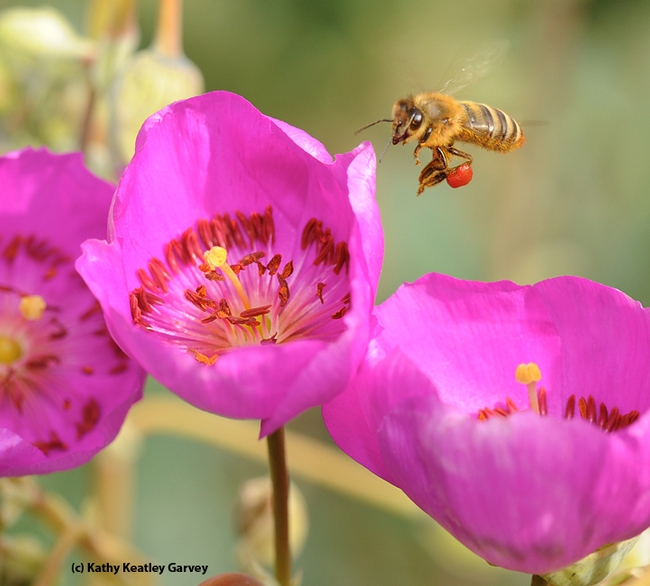
A pollen-packing honey bee heads for rock purslane, Calandrinia grandiflora. This is one of the plants available at the UC Davis Arboretum Plant Sale on Oct. 7. The plant yields red pollen. (Photo by Kathy Keatley Garvey)
Air pollution is ravaging what’s left of California’s native coastal sage scrubland
Because of its gentle topography and proximity to coastal cities, however, two-thirds of the coastal sage scrubland has already been converted to housing or farming, said Edith Allen, UC Cooperative Extension specialist in the Department of Botany and Plant Sciences at UC Riverside. The remaining coastal sage scrub is threatened by an invasion of exotic species and nitrogen deposition.
“Nitrogen deposition is caused by nitrogen oxide emissions from cars and industry. In addition, another plant fertilizer, ammonia, is emitted from agriculture and livestock operations,” Allen said. “The airborne emissions eventually settle on the soil surface, throwing the fragile coastal sage ecosystem out of balance, even 100 miles or more away from the emission sources.”
The combined deposition of nitrate and ammonia is up to 30 kilograms per hectare per year in the Los Angeles air basin. In contrast, in areas without the basin's air quality problems, about 2 kilograms are deposited per hectare each year.
“Growers fertilize small grain fields with 30 kilograms per hectare, so this represents a substantial nitrogen input,” Allen said.
Further compromising the coastal sage scrubland, grass species from the Mediterranean have been accidentally introduced into the ecosystem by activities associated with a booming agriculture industry, population growth, grazing and road building. The high nitrogen favors these exotic annual grasses.
“We've made a bad problem worse,” Allen said. “The exotic grasses are able to take up nitrogen at a faster rate, grow faster than native plants and displace them.”
In recent years, Allen worked with graduate students Robert Cox and Kristine Preston to understand vegetation-type conversion rate and recovery in coastal sage scrublands in western Riverside County. They compared information gathered by the Forest Service 85 years ago with 2002 California Department of Fish and Wildlife maps updated to 2009 using Google Earth. The analysis included measures of climate, topography, vegetation, land use, nitrogen deposition and fire in 151 study sites.
The analysis showed that 24 percent of the sites that were mapped as annual grassland in 1930 had recovered to coastal sage scrubland.
“In those parts of the county that did not receive much nitrogen, the native vegetation was able to recover,” Allen said. “Overall, the study shows that coastal sage scrubland conservation and restoration efforts are most likely to be successful on sites with low nitrogen deposition and low invasion of exotic grasses.”
For that reason, it only makes sense to try to restore coast sage scrub in areas where nitrogen deposition is low. For broader conservation, the best option is improving air quality.
This research determined that regions where nitrogen deposition is above the level of 11 kilograms per hectare per year will spontaneously convert to grassland.
“We have a value that can be used by regulatory agencies,” Allen said. “Right now, air pollution regulations aren't strong enough to protect the environment.”
Today, most passenger cars emit very low amounts of nitrogen oxides. The bigger problems in the Los Angeles Basin are diesel trucks and pollution generated in the ports of Los Angeles and Long Beach.
“Our population is growing. The volume in the ports is growing. As we come up with better, cleaner technologies, we're staying at the same pollution levels,” Allen said. “People need to realize that we will need lower nitrogen emission levels to protect our natural plant communities.”
The research was published last fall in the journal of Global Ecology and Conservation.
An initiative to maintain and enhance sustainable natural ecosystems security is part of the UC Division of Agriculture and Natural Resources Strategic Vision 2025.
How's Your Front Yard Looking?
How's your front yard looking? A little bit brown due to the drought? Thinking of replacing some of your plants with drought-tolerant ones? And...
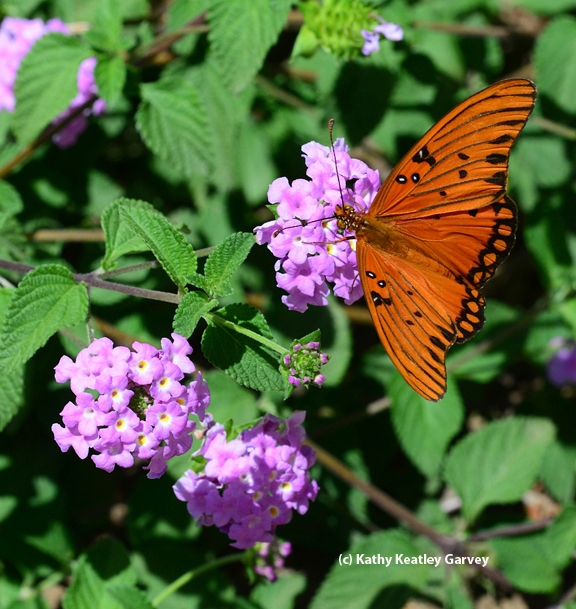
A Gulf Fritillary butterfly on purple lantana. (Photo by Kathy Keatley Garvey)
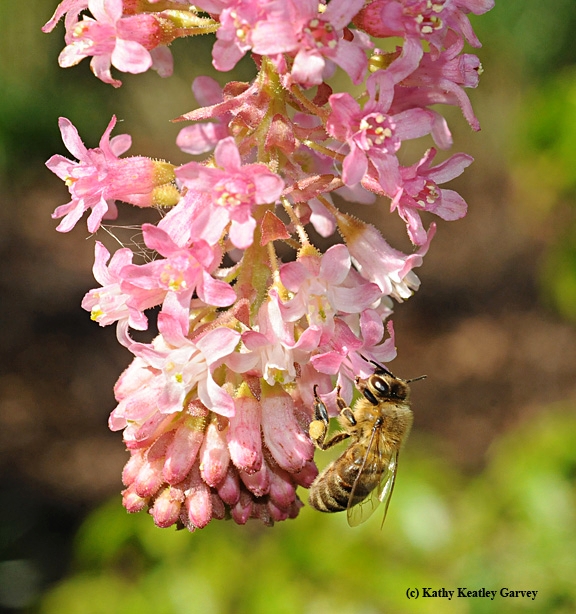
A honey bee on pink chaparral current. (Photo by Kathy Keatley Garvey)
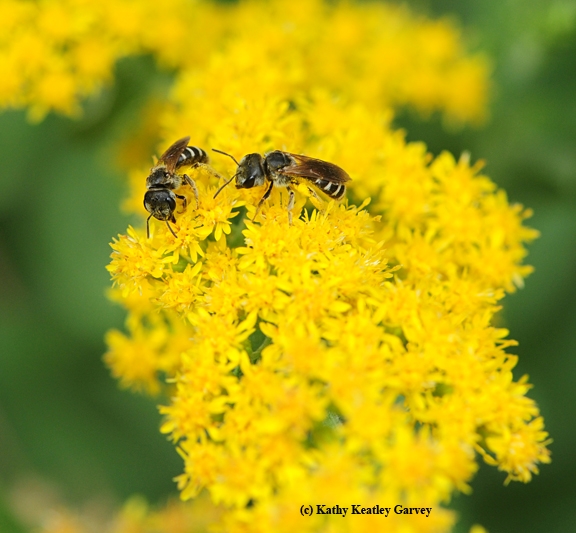
Sweat bees (Halictus ligatus) on goldenrod. (Photo by Kathy Keatley Garvey)
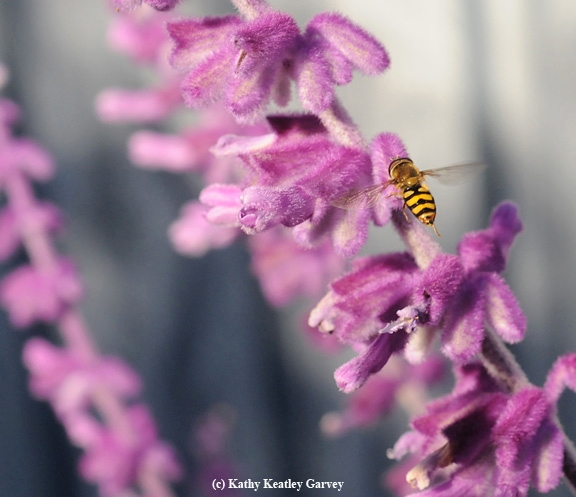
A syrphid fly, aka hover fly and flower fly, on Russian sage. (Photo by Kathy Keatley Garvey)


